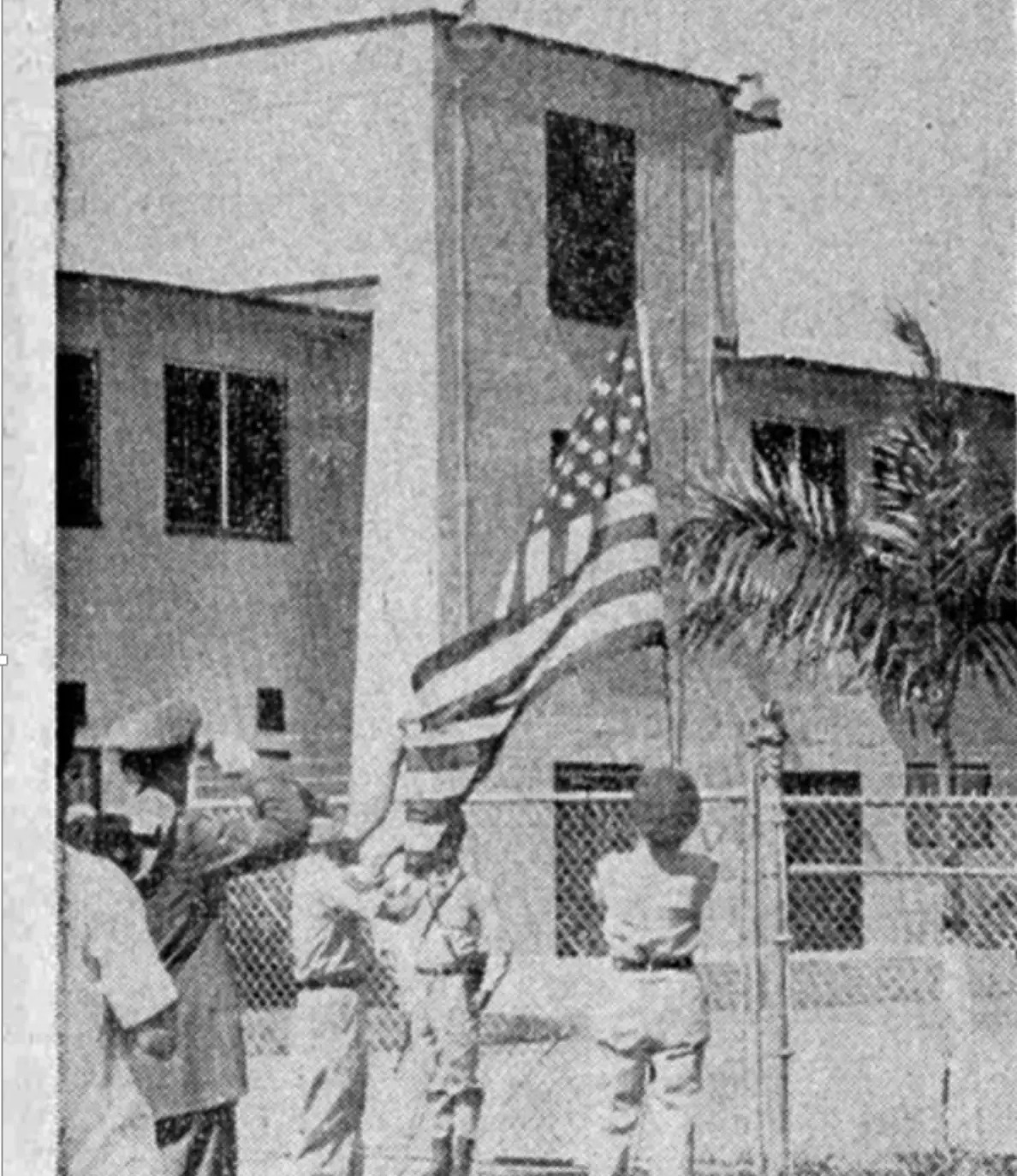A U.S. military base in the country in the twilight of the dictatorship

On November 23, 1956, a Directed Missile Base was inaugurated in the town of Sabana de la Mar, El Seibo province, by virtue of an agreement signed in 1951 between the governments of the D.R., the U.S., and Great Britain.
The facility was in operation until 1962 when the 10-year agreement expired and was extended by mutual agreement for one year in its final phase.
The common interests explain Great Britain’s participation in the base’s objectives and that similar bases were located in British colonial possessions.
After the Second World War, the so-called “Cold War” and its effects on our region began in 1945, encouraging military dictatorships and tyrannical regimes at the service of U.S. geopolitical interests. As is well known, Trujillo benefited greatly from this circumstance.
Sabana de la Mar, bordered by the Bay of San Lorenzo, is a sub-bay of the Bay of Samaná, whose strategic position has been highly valued since ancient times by different powers, which led to attempts to control it for geostrategic purposes.
Therefore, it was not by chance that this project was installed in that location.
“Located in any other part of the island, Samaná would be nothing more than a large peninsula forming a large bay. Placed where nature has placed it, it is one of those maritime positions such as are not found but two or three on the map of the world” (Sir R, Lepelletier de Saint Remy, Santo Domingo, Dominican Society of Bibliophiles, 1978. p. 197).
Communication center
The base established at Sabana de la Mar was part of the system of similar bases established by the U.S. from Cape Canaveral, Florida, to the southeast of Puerto Rico. The network of bases consisted of two bases in Florida (Cape Canaveral and Jupiter), four in the Bahamas (Grand Bahama, Eleuthera, San Salvador and Mayaguana), one in the Turks (Grand Turca), one in the Dominican Republic and the last one in the chain located in Puerto Rico.
The Patrick Base at Cape Canaveral was the headquarters for launching guided missiles, and the others had the mission of controlling the aircraft in flight, for which they had sophisticated equipment.
When the base was inaugurated in Dominican territory, different types of guided missiles were being tested, capable of transporting atomic explosives across the ocean, without a pilot, which represented a far-reaching achievement in military technology at the time.
The projectiles were launched across the Atlantic Ocean in a test area extending more than 5,000 miles from Cape Canaveral, Florida, to the island of Asuncion in the southern Atlantic, where they fell into the sea.
The Sabana de la Mar Station served as a communications hub for relaying scientific information between Cape Canaveral and Puerto Rico.
The financing of the project was the responsibility of the U.S. government; however, the availability and access to critical resources (the necessary land and water) was the responsibility of the Dominican government.
Members of the 1962 Council of State.
The State-owned part of the land and part was privately owned; a small portion of the private property was obtained through purchase, and most of it was obtained through donation, supposedly voluntary, by the owners. There was at least one case of appropriation because the owner refused to sell due to disagreement with the price offered.
The endowment at the base, from the construction phase, undertook actions aimed at generating social impact in the region. For example, public health supported the national authorities in controlling mosquitoes through fumigation campaigns carried out by military personnel.
Remains of the base
During the ten years that the base was in operation, between military personnel stationed there and native women of the community, some 30 marriages took place, none of which ended in divorce, according to the testimony of a then married woman, now a widow, interviewed by the author of this text.
The effective operation of this military infrastructure ceased on October 22, 1962, and using a public act on November 6; the facilities were handed over to the Dominican Government represented by Donald J. Reid Cabral, member of the Council of State; representing the government and the U.S. Air Force, Ambassador John Bartlow Martin, and Brigadier General Harry J. Sands.
Speaking for the U.S. Government, Ambassador John Bartlow Martin said that he was “very pleased to be here in Sabana de la Mar next to the beautiful bay of Samaná,” adding that “the act symbolized the spirit of cooperation between both governments…
Today, 700 miles away on another Caribbean island, a base of a different nature, is also being dismantled under very other circumstances…”, thus referring to the famous “October Crisis” or “of the missiles” in Cuba. Three days earlier, El Caribe newspaper published an eight-column headline, “U.S. verifies dismantling of Russian bases in Cuba.” Strange coincidence.
The Señorita Elupina Cordero municipal hospital now occupies the central infrastructure of the former military base.
Infrastructure
– Service center
What remains of the U.S. military base in Sabana de la Mar is today part of the Miss Elupina Cordero municipal hospital. Part of the land was private.


















Did Cuba asked DR, Haiti or Jamaica if nuclear missiles can be installed in Cuba in 10/1962? Did Cuba tell DR, Haiti or Jamaica, that they will be wiped out in a nuclear war because Cuba hosted nuclear missiles? Castro was a selfish, power hungry and idiotic leader who nearly put all of us in the Caribbean in the extinction list!